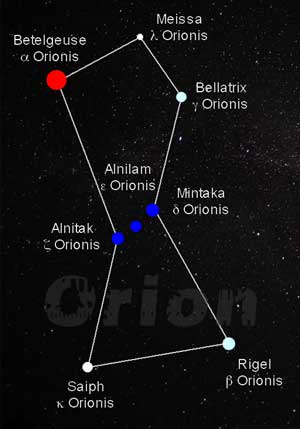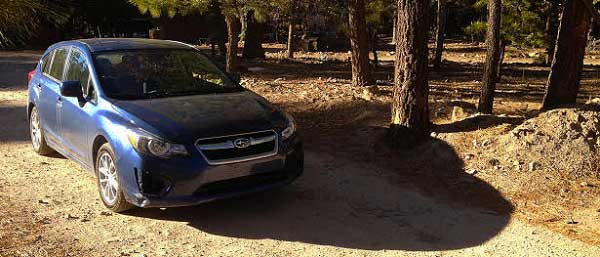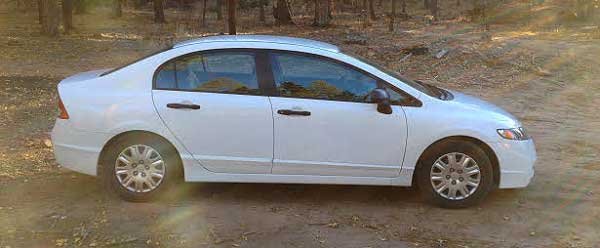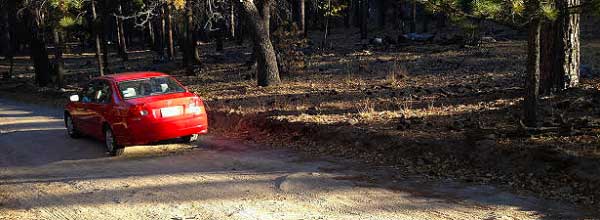Here’s a question: how can you use 3 cars to explain why stars are different colors?

This is our constellation Orion. The chart highlights which stars are red, white, or blue in Orion.
If you look up at the sky on a clear night, when the light from the moon or the light from the city isn’t washing out the sky, you might be overwhelmed by how many stars you can see. After your eyes adjust to the night, your night vision is a little bit stronger and you will notice that some of the stars are different colors. You might see white stars, red tinted stars, and blue tinted stars.
If you can find Orion’s belt in the sky, you will see the stars look blue. Orion’s right shoulder, the star Betelgeuse, looks red.
A star’s color and its temperature
For a long time, astronomers thought that the color of the star indicated its temperature.
Think of a campfire; what colors are the flames of a campfire? Reds, yellows, and oranges. What is the color of a flame on a stove top? Blue. The same colors as the stars we’re seeing in space. We know that blue flames are hottest and yellow to reddish/orange flames are cooler.
If we were to travel to these stars and see these stars as close as we can see our sun, the blue stars would be hotter than the red stars. Our yellow sun falls in the middle so it is a medium temperature compared to other stars in the Universe. It makes sense as to why Astronomers thought that its color told us of its temperature.

If we were able to travel to the surface of a star, we could see the colors of the flames. This chart shows how hot each color is.
But these stars are so far away that we can’t even see the color of the flames, so we can’t see the color of the stars, the colors of the stars in our sky isn’t caused by how hot the star is!
Well then, why are the stars different colors?
This is a difficult topic to explain. Our universe is always moving and always expanding. Just like how the moon moves around the Earth, and the Earth moves around the sun, and the sun moves around our galaxy. These stars are moving so fast and so far away from us that their color actually changes.
Think about a car passing by on a road. At first you can barely hear the car down the road and then the car gets louder as it comes closer. Then the car passes you and starts to become quieter, then you can just hardly hear it, then finally you hear nothing.
The same thing that is happening with sound when the car passes by us is the same thing that happens with light to stars. That light is traveling a lot further and moving a lot faster, a million times faster than sound. On one side we have the star moving towards us, as the car moved towards us, getting “louder” the star looks blue. When the star is moving away from us, like the car driving away, it gets “quieter” so the star looks red. When the star is moving at the same speed as us or appears to be not moving at all, like when the car was right in front of us, the star looks white.
Here the car is coming towards me, getting louder. In space, stars moving towards us look blue.

This car is right in front of me, it is not moving towards me or moving away from me. In space, stars that don’t move towards us or away from us look white.

This car is driving away from me, getting quieter. In space, stars moving away from us look red.

The stars that appear blue are moving closer to us. These stars are blueshifted. Stars that look red are moving further away from us. These stars are redshifted. Stars that look white are not moving closer or farther from us. This is called the Doppler Effect and this is the reason stars are different colors.
But are the stars really Blue and Red?
 Think back to our car example. Does the car actually get louder or quieter as it moves? No.
Think back to our car example. Does the car actually get louder or quieter as it moves? No.
From the perspective of the driver, the car always sounds the same. Just like the stars we see in the sky, the stars change color from our perspective. But if all the redshifted stars and blueshifted stars were not moving closer or further from us, they would look white!
Learn more:
- http://www.kidsastronomy.com/stars.htm
- http://cas.sdss.org/dr6/en/proj/advanced/color/temperature.asp
- http://imagine.gsfc.nasa.gov/YBA/M31-velocity/Doppler-shift-2.html
- http://www.esa.int/Our_Activities/Space_Science/What_is_red_shift
- http://www.scholastic.com/teachers/article/stars
At High Trails Outdoor Science School, we literally force our instructors to write about elementary outdoor education, teaching outside, learning outside, our dirty classroom (the forest…gosh), environmental science, outdoor science, and all other tree hugging student and kid loving things that keep us engaged, passionate, driven, loving our job, digging our life, and spreading the word to anyone whose attention we can hold for long enough to actually make it through reading this entire sentence. Whew…. www.dirtyclassroom.com

Comments are closed.